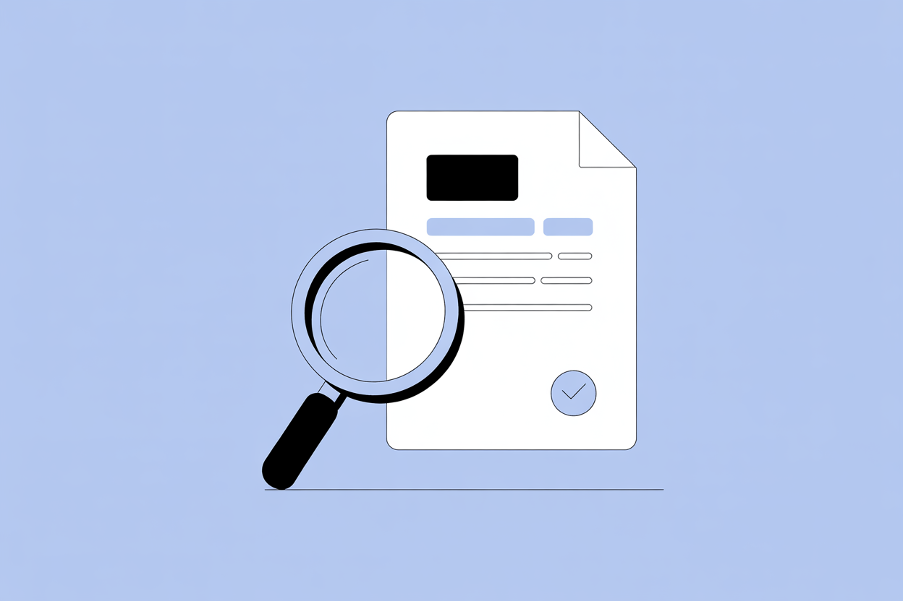Artificial Intelligence
Can Turnitin Detect Paraphrased AI? 2025 Guide for Students
- Aug 12, 2025

Students and educators are in an ongoing competition. As AI writing tools become increasingly sophisticated at generating and paraphrasing content, academic integrity systems are evolving to keep pace. Turnitin, the leading plagiarism detection service used by thousands of institutions worldwide, significantly upgraded its detection abilities in 2024 and continues to refine them in 2025 specifically to identify AI-paraphrased content. Turnitin’s AI detection functions are detailed in its official AI Writing Detection Model documentation.
As someone who works with universities on academic integrity, I’ve seen this cat-and-mouse game up close. This guide offers tested, technical insights based on Turnitin's latest updates. Rather than speculation, we've analyzed the actual detection mechanisms and real-world performance to help you understand precisely what gets flagged and what doesn't. Students frequently ask on platforms like Reddit, "Can Turnitin detect paraphrased AI?" and "Can Turnitin detect ChatGPT if I paraphrase?" These concerns are addressed here with evidence-based information.
Turnitin's AI Detection Revolution
Turnitin rolled out a major system upgrade in July 2024 that fundamentally changed how it handles AI content. The previous system only identified direct AI-generated text, creating an obvious loophole where students could simply run AI content through a paraphrasing tool to evade detection.
Enhanced Detection Features

Visual Highlights for Detection Results:
- Red highlights: High confidence (fully AI-generated text)
- Yellow highlights: Medium confidence (AI-paraphrased content)
- Blue highlights: Low confidence
- Gray highlights: Unable to process/No result
Confidence Score System:Each sentence receives an AI likelihood score from 0 (human) to 1 (AI). The system analyzes overlapping segments and calculates weighted averages to determine visual highlights.
Document-Level Analysis:
- Turnitin only provides percentage scores for documents with 20% or more AI content
- Scores below 20% display with an asterisk (*%) indicating likely false positives
- Short submissions under 300 words are not analyzed
| Comparison Feature | Before July 2024 | After July 2024 Update |
|---|---|---|
| Paraphrased AI detection | Limited to none | Yes, with medium confidence indicators |
| Visual highlight system | Basic | Advanced (Red, Yellow, Blue, Gray) |
| Confidence scoring | Binary | 0-1 scale with weighted analysis |
| False positive protection | Limited | Asterisk system for <20% content |
| Detection transparency | Limited feedback | Visual highlights with confidence levels |
How Turnitin Actually Detects Paraphrased AI Content
Turnitin's detection mechanism relies on pattern analysis rather than simple text matching:
- Linguistic signature analysis: The system examines writing patterns, style consistency, and subtle linguistic markers that remain even after paraphrasing.
- Segment overlapping: Rather than analyzing text as a whole, Turnitin examines overlapping text segments to identify AI patterns that might be obscured when viewing the complete document.
- Model-specific recognition: The AI detector is trained to recognize outputs from major language models including GPT-3.5, GPT-4, and others, even when those outputs have been modified.
For further technical detail on Turnitin’s AI model training and detection algorithms, refer to Turnitin’s AI Writing Detection Model documentation.
Paraphrasing Tool Performance Against Detection
Tool-Specific Detection Rates
Different paraphrasing tools show varying effectiveness against Turnitin's detection. After running my own tests, I can confirm that no tool is a magic bullet.
| Paraphrasing Tool | Detection Vulnerability | Effectiveness Against Turnitin |
|---|---|---|
| QuillBot (Fluency mode) | High | Often detected [2][4] |
| QuillBot (Creative mode) | Moderate | Better evasion rates [2][4] |
| Spinbot | High | Frequently flagged |
| Wordtune (Casual) | Moderate | Mixed results [2] |
| Wordtune (Formal) | High | Often detected [2] |
| Paraphraser.io | High | Commonly flagged |
| Humanizer AI | Moderate | Better evasion rates [2][4] |
Key Finding: Advanced paraphrasing modes that alter sentence structure, synonyms, and logic patterns show better evasion rates than basic reformatting tools.
Detection Accuracy: Claims vs. Reality
Turnitin's Advertised Performance:
- Document-level false positive rate: Less than 1% for papers with 20%+ AI content
- Sentence-level false positive rate: Approximately 4%
Real-World Limitations:
From my experience, these false positive rates are the biggest headache for instructors and a source of genuine anxiety for students.
- Non-native English speakers: Significantly higher false positive rates due to writing style patterns.
- Mixed content: Higher error rates at boundaries between AI and human text.
- Neurodivergent students: Increased false positive risk.
- Paraphrased content detection: Turnitin shows only "moderate" accuracy compared to specialized tools like Originality.ai.
Substantial Human Editing Strategies
To effectively reduce detection, extensive human editing is required across multiple dimensions:
Structural Changes:
- Voice alteration: Convert active to passive voice and vice versa.
- Paragraph reordering: Rearrange logical flow and argument sequence.
- Sentence restructuring: Break long sentences into shorter ones or combine brief sentences.
Content Enhancement:

- Unique examples: Insert personal anecdotes, specific real-world cases, or context-specific details.
- Emotional context: Add references to feelings, experiences, or subtle perspectives.
- Technical specificity: Include domain-specific terminology or detailed explanations.
Language Modification:
- Synonym substitution: Replace key terms with less common alternatives.
- Syntax variation: Alter sentence connectors, punctuation patterns, and article usage.
- Minor imperfections: Introduce slight grammatical variations or casual language elements.
Extent Required for Success:
Changes must affect 30-50% of the content across multiple strategies. Light editing with occasional synonym replacement proves insufficient for effective detection evasion.
Institutional Policy Approaches
Universities are adopting different strategies for managing AI use. It's a classic split: some are banning the car, while others are teaching advanced driver's ed.
| Aspect | University of Waterloo (Restrictive) | University of Bristol (Embracing) |
|---|---|---|
| AI Detection Tools | Discontinued due to reliability concerns [5] | Used as part of broader strategy |
| AI Usage Policy | Determined at course level by instructors | Limited to occasional phrases and grammar checking |
| Disclosure Requirements | Explicit documentation of any AI tool usage | Assignment-specific guidelines on permissible AI use |
| Verification Approach | Collection of drafts and work processes [5] | Academic misconduct threshold for undisclosed AI use [3] |
| Focus | Avoiding false positives and bias | Building responsible AI literacy skills |
Comparative AI Detection Performance
| Detection Tool | Advertised Accuracy | AI-Paraphrased Content Performance | False Positive Issues |
|---|---|---|---|
| Turnitin | 98-99% | Moderate | High for non-native speakers |
| GPTZero | 99%+ | Moderate-Good | 0.2-1% claimed [3] |
| Copyleaks | 99%+ | Similar to Turnitin | 0.2-1% claimed [3] |
| Originality.ai | 99% | Best-in-class | Lower reported rates |
| Sapling | 95%+ | Variable | Limited data available |
| Humanizer AI | 99%+ | Best-in-class | 0.2-1% claimed [3] |
Note: Independent testing often reveals higher real-world error rates than advertised claims.
What This Means for Students in 2025
Detection Expectations:
- Both original AI-generated and paraphrased content face increased scrutiny.
- Instructor reports now provide detailed confidence levels and visual indicators.
- Multiple detection attempts may yield different results due to system variability.
Policy Compliance:
- Check course-specific rules before using any AI assistance.
- Document all AI usage with proper citation and disclosure.
- Understand institutional definitions of acceptable vs. prohibited AI assistance.
- Prepare to explain your writing process if questioned.
Risk Assessment:
- High risk: Direct AI output, simple paraphrasing tool usage, undisclosed AI assistance.
- Moderate risk: Extensive AI assistance with disclosure, mixed human-AI content.
- Low risk: Minor grammar assistance, research support with proper attribution.
Bottom Line: Should You Worry About Detection?
Yes, Turnitin can detect paraphrased AI content with reasonable accuracy, particularly when standard paraphrasing tools are used. The July 2024 update specifically targets this evasion strategy.
Detection is not perfect but serves as an effective deterrent and an investigation's starting point. False positives occur, especially for non-native speakers, making detection results best used for academic conversations rather than definitive misconduct determination.
Your safest approach: Follow institutional AI policies explicitly, disclose any AI assistance, and focus on developing authentic writing skills rather than trying to beat the system.
Frequently Asked Questions
Does Turnitin detect paraphrasing AI?
Yes, as of July 2024, Turnitin can detect content that has been generated by AI and then paraphrased using AI tools. The system uses different visual highlights to distinguish between fully AI-generated content (red) and AI-paraphrased content (yellow).
Does Turnitin flag QuillBot as AI?
Turnitin can detect content paraphrased with QuillBot, particularly when using basic modes like "Fluency." However, more advanced modes like "Creative" show better evasion rates. The detection depends on the original content source and the extent of paraphrasing applied.
Can AI be detected if I paraphrase?
Yes, AI-generated content can be detected after paraphrasing, especially when using automated paraphrasing tools. Turnitin's updated system specifically targets this approach. Substantial human editing affecting 30-50% of the content across multiple strategies is required for potential evasion, but detection remains possible.
Can Turnitin actually check for AI?
Yes, Turnitin can check for AI-generated content with reasonable accuracy. The system analyzes writing patterns and linguistic signatures characteristic of various AI language models. Document-level false positive rates are claimed to be less than 1% for papers with 20%+ AI content, though sentence-level rates reach 4%. However, accuracy varies significantly for non-native speakers and specialized content.
Can Turnitin detect ChatGPT or QuillBot?
Turnitin is trained to detect outputs from popular AI models like ChatGPT, even after paraphrasing through tools like QuillBot. The effectiveness depends on the paraphrasing mode used and the extent of subsequent human editing. Standard paraphrasing typically remains detectable.
